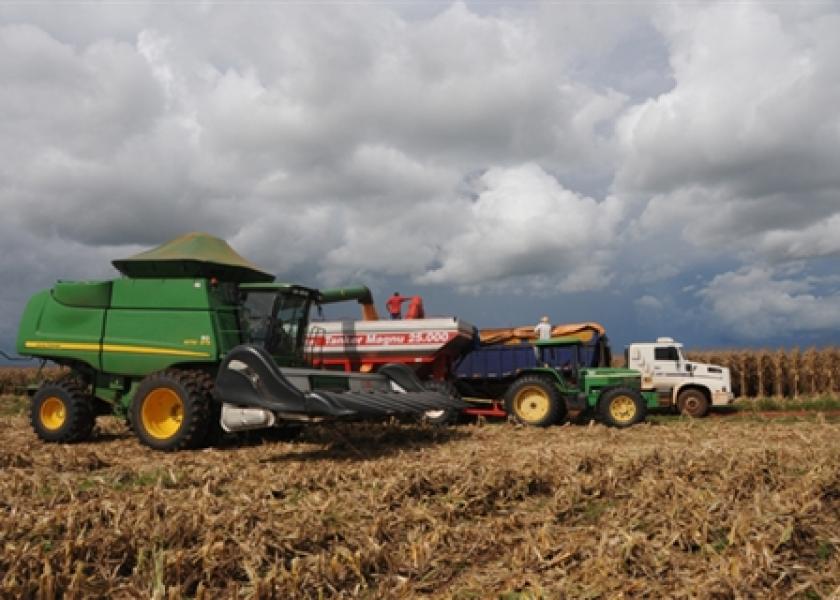Analysts cut crop estimates for South America

Some analysts pushed down estimates Tuesday for South American crops due to weather woes and cautioned that damage could trim estimates even more.
Several, including Dan Hueber of the Hueber Report, said a recent freeze in the region also could have stressed crops even more.
South American grain analyst Michael Cordonnier of Soybean and Corn Advisor on Tuesday cut his South American crop estimates and said he had "a lower bias" going forward because of crop conditions.
Cordonnier lowered his estimates by 1 million tons to 56 million this week for Argentina's soybean crop, which was damaged by lashing rain and flooding. In drought-stricken Brazil, he dropped corn crop estimates by 1 million tons to 78 million tons.
"It is possible my (Argentina) soybean estimate might still go down another 2 to 3 million tons, but unfortunately, we may not have an accurate estimate of the Argentine soybean crop until all the crop is harvested," Cordonnier said.
"A big problem in Argentina is going to be poor quality seed," he added. "Many regions went 20 straight days with nearly 100 percent relative humidity, no sun, and relatively high temperatures.
The result was a lot of soybeans sprouting and rotting in the pods."
Cordonnier said the 2015/16 Argentine corn estimate was left unchanged this week at 25.0 million tons and that he had "a neutral to lower bias going forward."
"The problem with the corn estimate is also trying to determine how many hectares were flooded and the extent of the losses in those areas," he explained.
In Brazil, safrinha corn also is in danger of further deterioration due to dry conditions,, he observed.
The Agricultural and Livestock Federation of Goias (Faeg) estimated last week that the safrinha corn crop in the state would be down as much as 50% to 80% in some areas.
Farmers were asking their local governments to decree a state of emergency as a way to help them bargain with the grain companies because they will not have enough corn to fulfill their forward contracts, according to Cordonnier.
Brazil's national crop agency, known as Conab, put April safrinha corn at 57.13 million metric tons, and estimated total corn production at 84.65 million metric tons. Brazil's soybean estimates were unchanged at 98 million metric tons.
Meanwhile, Agr Brasil, a unit of AgResource, Tuesday said the total safrinha corn production from Mato Grosso state was expected to be between 19.5 and 20.5 million metric tons, well above other trade estimates of between 17 million metric tons to 18 million metric tons in the region.







